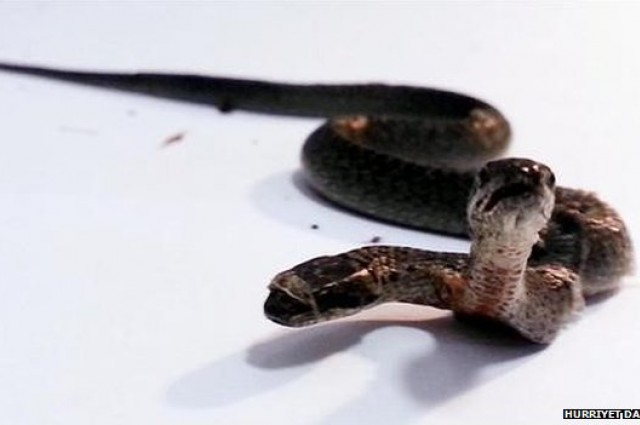A farmer in northeastern Turkey recently discovered a bicephalic snake; that is, it has two heads. This phenomenon occurs when monozygotic twins fail to separate completely, so it’s really a case of conjoined twins and not a mutation that caused two heads to grow.
When these types of animals occur out in the wild, they tend not to live very long. With two brains governing one body, movement isn’t always smooth and deliberate. Instead, they can disagree about how to move, making it fairly difficult to catch prey. This anomalous anatomy also makes them fairly easy prey for larger predators as well. However, two-headed snakes receiving proper captive care are able to live full, relatively normal lives and even give birth to normal offspring.
The two-week-old snake was transferred to a vivarium in southwestern Turkey in order to receive the specialized care it requires for survival. The snake is likely part of the Coluber genus, which are generally referred to as “racers” due to their thin, sleek bodies and ability to move fairly quickly. (…)
These snakes have throats that are more narrow than usual, so the caretakers need to be careful not to offer any food that is too large, since the snake could possibly choke.
Though technically only one of the heads needs to eat, since they share a stomach and nutrients, the two heads don’t know that and can fight over the food. If one head kills the other, it could be disastrous for the head that was initially victorious. If these snakes were in the wild, the time spent fighting would leave it more vulnerable to predators.
If you want to see what two-headed snakes look like, watch this video:
